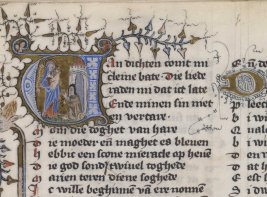Nederlandsche vogelen by Nozeman en Sepp
The 5-volume work Nederlandsche vogelen (1770-1829) is the first attempt to give a complete overview of all birds that can be found in the Netherlands. The book provides information on more than 200 bird species. For each bird species, you will find a description and a hand-coloured illustration. Thanks to this book, we now know a lot about which bird species were found in the Netherlands in the 18th and 19th centuries and what people knew about them.
Full-size drawings in Nederlandsche vogelen
The birds are depicted in full size as much as possible. This makes it a book of exceptionally large size: 56 by 39.5 centimeters. In the first parts, Nozeman also depicts the associated nests and eggs of the birds.
Practical information in Nederlandsche vogelen
Nozeman's descriptions are often very practical. For example, he provides information about combating birds that cause a nuisance. He also discusses in detail which bird species you can eat, including species that are no longer used in the kitchen today. For example, he describes coots, starlings and ruffs as delicacies. Because Nozeman studied birds in the wild, he also knew a lot about the behavior of birds and their young.
Reissue of Nederlandsche vogelen in book stores
For those who would like to have their own edition of Nederlandsche Vogelen, a reduced reissue of all plates is available. The reprint contains all 250 plates from the 5 parts of the book in 1 volume. The reissue is available in bookstores and was produced by Lannoo publishers in collaboration with the KB. The previous reprints of the book and all texts in the original format sold out in no time.
Browse Nederlandsche vogelen online
You can browse this masterpiece online. All 250 plates from this KB masterpiece can also be viewed and downloaded via Wikimedia Commons. You will find this masterpiece in the KB catalogue under request number KW 1047 B 10 [-14].







